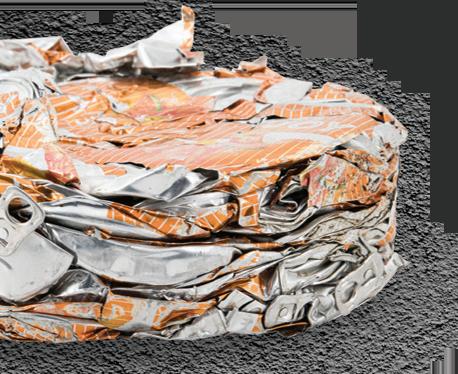
7 minute read
Black-Owned Brewing Co Opens Up Underserved Market
an internal shelf life assessment called 30, 60, 90 where they test the beers 30 days after packaging, 60 days after packaging, and 90 days after packaging, as well as under different conditions.
“Knowing what’s going on with your product as it goes through its life cycle is important,” Baker says. “Now, if
somebody brought us a beer and they’re like, ‘What’s wrong with this?’ I could tell you just from the taste how old it is, how many days it’s been warm, and how it’s been stored. The reality of it is once the beer leaves your facility, you really WEIMA PMMI E200 Ad.pdf 1 2/10/2022 10:50:33 AM don’t know what happens to it.” Mother Earth’s lifecycle analysis, which provides valuable insights on beer quality even after it leaves the brewery, helps identify and account for distribution issues that could negatively impact a beer that left the facility fresh and delicious. These steps improve insight into the whole operation and inform the company on how to keep quality as high as its fans expect. ●


Cans on their way into a PakTech can carrier applicator 120/180. The applicator can be configured for a six-pack or four-pack. From there, a long infeed conveyor brings cans to the Econocorp cartoner.


In an era when subservient, racially charged mascots are being shown the door, Moor’s Brewing ushers in a royal depiction of the untold story of Africa’s massive contribution to current craft brew culture.
By Matt Reynolds, Chief Editor
When you think of demographics making up the craft beer market—both its consumers and its producers—a suite of social stereotypes likely leaps to mind. If people were forced to describe or sketch a craft brew persona, most would likely come up with a casually dressed, outdoorsy, and oftentimes bearded or tattooed white Gen X man with disposable income. That’s not necessarily a value judgement or an indictment on the industry; a trip to the annual Craft Brewers’ Conference bears out this rule of thumb. By and large, that’s just who has traditionally represented the craft beer industry. The Craft Brewer’s Association knows this, and is working to become more diverse—both because it’s the right thing to do, and because they need to address changing demographics to stay relevant.
At the Craft Brew Conference last year in Denver, Craft Brewers Association economist Bart Watson revealed that in 2019, the number of young women who drink surpassed the number of young men who drink. This doesn’t take volume into consideration—young men drink more in volume. But you have to wonder what craft beer might do for women, who have historically been groomed for wine, and who now have options in the RTD spirits beverages alongside seltzers and other non-beer options?
Also, according to a study by Rabobank that Watson referenced, “Spending [in alcohol] is increasingly female, and spending is increasingly BIPOC (Black, Indigenous, and People of Color).” Some might say that overall U.S. demographics are doing the same, but those spending increases were happening even faster than that. Craft brewers are asking themselves, “how can we get out to those ‘new’ markets that have greater buying power?”
The Association is convening the BRU (Brewing, Respect, Unity) Coalition, designed to foster an equitable and inclusive brewing community. Read more about these and other programs from the Brewers Association at pwgo.to/7500 but suffice it to say they are largely aimed at social equity and inclusivity. The craft brewing industry as a whole is aware of its demographic makeup and is working to become more inclusive.
Meanwhile, in Miami…
Damon Patton, who attended the University of Illinois at Urbana-Champaign (and for the purposes of the demographics in question, is a young black man) was enjoying the weather in South Florida and making his own hours as an Uber driver. His concept of who makes up the craft brew market matched the one we just described, but it wasn’t something he thought much about—at least until one Uber delivery got him thinking. “I delivered an order of beer to a party in an upscale villa on Miami Beach,” Patton says. “I wasn’t expecting it, but enjoying the beer there were 30 to 45 black people. And I was dropping off a bunch of beer—it was at least 12, maybe 15 cases. I just asked the question, ‘Is this beer for you guys?’ They said, ‘Yeah, why wouldn’t it be for us?’ It was at that point that I thought, ‘I think we can probably sell beer [to the black community].’”
Patton reached out to college friend and entrepreneurial collaborator Jamhal Johnson, a fellow young black man and U of I grad, to kick off the idea. The black community has been traditionally underserved by the craft brew market, but
Johnson and Patton are seeking to change that. And they don’t mean to do so by asking the existing market to better cater to black people. Instead, they’re diving into the craft brew market, as a black-owned business, to help make a market and build a business that they themselves control.
An early hurdle was overcoming the dismissive reason why the market had been underserved. Rightly or wrongly— and the following sentiment contains implicit bias—the industry perceived a price sensitivity in the black community as an obstacle. But Patton says that the industry was missing the boat by internalizing that vaguely racist rule of thumb. Consider the party at the fancy Miami Beach villa; there was not a lot of price sensitivity at that occasion. “The craft beer industry hasn’t really marketed to the African American community specifically,” says Patton. “The recent advent of these African American-owned craft breweries that are coming on, we’ve seen a little bit more of it, but traditionally, it just hasn’t been there. The Uber delivery led us to believe that we could actually sell product to the African American community, it just had never really been tried before.” What resulted from the collaboration became Chicago’s











Moor’s Brewing Co., with a tagline reading as follows: Less than 1% of the craft brewing industry is African Americanowned. We are Chicago’s Black Owned craft brewing company, established Juneteenth 2021.
The name and marketing are built on a historical king. In 711 A.D., King Tariq Ibn Ziyad led Moors of Berber decent across the strait of Gibraltar between Africa and Europe—conquering Spain for the next 700 years. They introduced new scientific techniques to the European culture, including a distillation and fermentation process that produced what they called al-kuhl. This beer pays homage to the rich untold history of its African ancestry and the original craft brewers.
The social moment of 2021 was a cauldron of change that helped accelerate things for the brand.
“At the height of COVID-19 and civic unrest following the George Floyd incident, more focus was being placed on diversity and inclusion,” Johnson says. “The craft beer industry presented a great opportunity for diversity from both the supplier and consumer perspectives.”
Packaging and imagery
There has been much discussion around brands retiring racially charged mascots. Whether Uncle Ben or Aunt Jemimah, a common theme of these mascots has been their polite, respectful subservience as servants, cooks, or housekeepers.
Moor’s Brewing Co.’s 16-oz. brightstock cans, on the other hand, use a pressure-sensitive label depicting King Ziyad, a black man who was a conqueror and deliverer of science innovation, a far cry from the subservient, conquered mascot. The can art comes from the 16th century Dutch painter Hendrik Heerschop’s “The African King Caspar.” Moor’s added the postmodern hip hop flare to make the image their own.
“In light of social injustice, we wanted to remind the community of its rich regal history; a time when people of color were kings and queens,” Johnson says. “We wanted our brand to represent black excellence and original craftsmanship; paying homage to the Africans that civilized Europe via spirits, infusing our post-modern artistry.
“Our target market is brand loyal, and I felt that we needed to be brand forward, using a name, imagery, and








